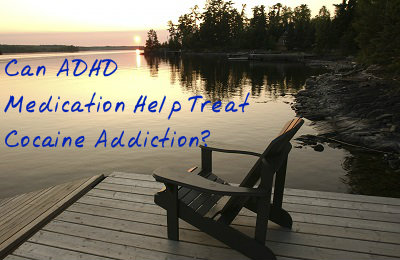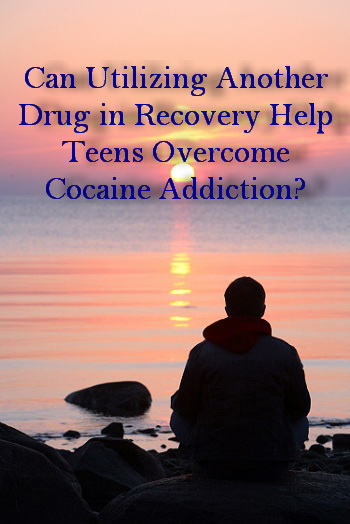Charlotte has been summoned by her father. She must leave Paris at once and head back to New York or he’ll probably do something drastic—like take away her monthly allowance. It will be two more years before she’s eligible to access her trust accounts, and so she is dependent on that money for everything she needs—vacations, parties, dresses. There’s something she’s been spending more and more of her money on lately, however; and of course her father couldn’t know anything about it. He never pays attention to her life except when he needs her to make an appearance and pretend to be the “respectable daughter” of his family’s massive fortune.
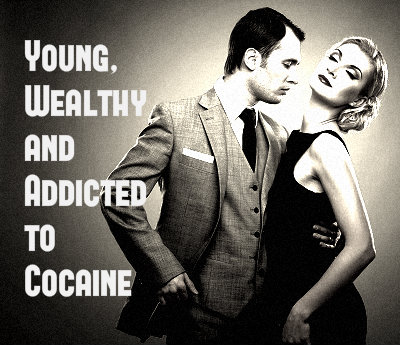 She scrambles around first in her Lanvin tote and then in the Louis Vuitton at her feet—there it is. She comes up with a small baggie of white powder and dumps a mound of it onto a compact mirror. Her father’s jet hasn’t left the tarmac, but Charlotte is already flying.
She scrambles around first in her Lanvin tote and then in the Louis Vuitton at her feet—there it is. She comes up with a small baggie of white powder and dumps a mound of it onto a compact mirror. Her father’s jet hasn’t left the tarmac, but Charlotte is already flying.
The entire winter has been as buzzy and unfocused as she is now. Night after night after night—turning into stretches of days—the young socialite smokes heady French cigarettes, drinks bottles and bottles of champagne and snorts the white powder with growing regularity. Interspersed are the nights spent on “molly”—or MDMA—and once or twice trying a drug she didn’t know until afterward was angel dust, or PCP.
It’s snowing all the time, whether it’s snowing or not. The heiress has a dull headache in the front of her skull that won’t go away and her normally waspy body is down several pounds. The Stella McCartney pantsuit she’s wearing fit her so much better only two weeks ago when she bought it in London. She’s waifish in the way her class and gender are expected to be, but far more so; she is deadly thin. Still, as Charlotte puffs on the cigarette, her teeth gleam in a grin as she exhales; she feels gorgeous, brilliant as a diamond.
But her father’s assistant sits stricken. Charlotte’s nose is dripping blood onto that winter white suit. This is the first time the woman has seen her employer’s daughter look so ungodly ill—there are dark circles under her eyes; her face is gaunt and dull despite the bright coral Dior lipstick. When did the girl take up smoking? As she reaches for a bottle of tonic water to daub the stain, she notices the baggie. The two women meet eyes; both know this will be a very long flight.
Crack Cocaine – An Equal Opportunity Destroyer
When you think about crack cocaine addiction, young women and men lost to the illusions painted by the dangerous highs of angel dust, stuttering speech and the smear of mascara, you probably think of the inner city. Young people with hopeless futures and no way out; little money and nowhere to go with whatever potential they might possess. But this tableau is just as common among the prep school lot of the Upper East Side. Wealth and power know the pain of addiction as well as any other class. Picture the celebrity heiress, falling from grace on the cover of Page Six. She could go anywhere, have anything—why does it happen?
Sigrid Rausing, Swedish philanthropist, anthropologist and publisher put it aptly: “The pros of inheriting great wealth, I believe, are largely illusory and can become pathological. An illusory sense of being special and different, the assumption that one is interesting to other people only, or mainly, because of the money, and subsequent feelings of isolation.”
Isolation. For those outside the 1 percent, it can be hard to imagine how the proverbial keys to the kingdom might lead one to a sense of alienation, but imagine: you have everything in the world, everything many others would take from you in a heartbeat; you can never be entirely certain whether those who remain close to you do so for the privilege your prestige brings or whether you truly matter to them; and a great portion of the world is hoping you will fail. You have no need to work, no need of avocation except as hobby. A 20,000 square foot beach house in the Hamptons, a penthouse apartment in Manhattan, and half the island of Barbados may be yours, but what of meaning? Purpose? Those things must be created by each of us; they are never inherited.
According to William F. Messinger, “More than just a distraction, addiction fosters complex dysfunction that affects families on multiple levels: from the rampant financial drain to support the addict’s habit to the exhausting tension and family conflicts to the public relations nightmares of outbursts and arrests. It’s a problem that can threaten the very underpinnings of the family’s wealth and security.” While no one elects at the outset to become riddled with the problem of chronic addiction in order to advance the demise of his or her life or that of the family name, families would do well to consider the problem of addiction as serious as diabetes or cancer, and as likely to advance if not taken seriously.
Recovery Is No Easier, No Matter Who You Are
And therein lies the rub. While the very wealthy may be able to afford the finest recovery centers, the best doctors and the most up-to-date, ongoing care for their addicted loved ones, the problem of addiction reaches into the very depths of who we are as people, and is a battle which must be fought daily. No outside help can do the fighting for you. A middle-class individual may feel more able to walk into an AA or NA meeting and trust the anonymity inherent in the group’s mission. She can largely trust that others will be in the meeting with lives and problems much the same as hers, but when you come from the very highest echelon along the social class structure, you may fear showing up at all for fear of making too vulnerable your family’s name or security. This is not stated as a reason to feel sorry for the wealthy; it is simply a fact. No matter who we are, or what we have, if we deal with the problem of addiction, we must suffer its consequences.
Money and status can buy many things. Unfortunately, they cannot secure a life free from the stranglehold of addiction, or entirely clear the devastation wrought after addiction has taken its hold. They can, however, if a person is willing to invest the time and interest, provide a life where making oneself well is at least financially possible, and where creating purpose and meaning can be carved out should one choose. It is the purpose and meaning part, after all, which will carry us through into recovery, no matter who we are.
A recent study published in the journal Drug and Alcohol Dependence reports that the drug topiramate may help people battling cocaine addiction. More specifically, the study showed that people suffering from both cocaine and alcohol dependence may be more successful in treatment and use less cocaine if they are prescribed topiramate. These findings largely agree with previous, separate studies that also show topiramate’s potential usefulness for treating cocaine and alcohol addictions. However, this most recent study is the first to look at the drug’s effectiveness for people dealing with both dependencies at the same time.
What Is Topiramate?
Topiramate is an anticonvulsant drug that was discovered in 1979. It was approved by the Food and Drug Administration (FDA) in 1996 and has been primarily used to manage seizures in patients with epilepsy. Topiramate has also been frequently prescribed to prevent migraine headaches. In 2012, the FDA also approved topiramate for use as a weight-loss drug in combination with the drug phentermine.
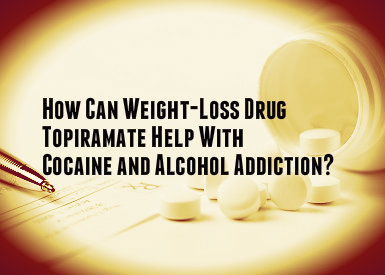 One of the effects of topiramate is an increase in the amount of gamma-Aminobutyric Acid, or GABA, in the brain. This substance is a neuro-inhibitor, and researchers now hope that using topiramate to increase GABA levels may help limit the dopamine release that happens when people take cocaine or drink alcohol. This would reduce the euphoric feelings that result from these substances, and make it easier for people to resist cravings and fight addiction.
One of the effects of topiramate is an increase in the amount of gamma-Aminobutyric Acid, or GABA, in the brain. This substance is a neuro-inhibitor, and researchers now hope that using topiramate to increase GABA levels may help limit the dopamine release that happens when people take cocaine or drink alcohol. This would reduce the euphoric feelings that result from these substances, and make it easier for people to resist cravings and fight addiction.
Details Of The New Study
Researchers in the psychiatry department of the Perelman School of Medicine at the University of Pennsylvania created and published the new topiramate study. These researchers were assisted by the Charles O’Brien Center for Addiction Treatment.
The study took place over 13 weeks, with the participation of 170 people who experienced both cocaine and alcohol dependence. The majority of the participants in the study were African-American males, and participants had an average age of 45.
Some of the patients were treated with topiramate, while others were given a placebo. The study employed a double-blind set-up, in which neither the patients nor the researchers knew who was taking the drug versus the placebo. This allowed researchers to examine the true effectiveness of the drug at reducing cravings, reducing overall consumption of cocaine and alcohol, and helping patients stay in treatment.
Mixed Results
At the conclusion of the study, researchers found both positive and neutral results for the effectiveness of topiramate. Patients who received the drug were more likely to remain in treatment and less likely to use cocaine during the last three weeks of the trial than those who received the placebo. Twenty percent of the participants on topiramate were able go without cocaine during the study, compared to only 7 percent of the participants on the placebo. Patients who had the worst withdrawal symptoms in the past seemed to benefit the most from topiramate.
However, the drug was not better than the placebo at reducing cocaine cravings. In addition, the drug did not help patients reduce their drinking even though they generally reported reduced alcohol cravings.
These results were somewhat surprising, since past studies have shown that topiramate did help people with alcohol dependence. The researchers in the Perelman School of Medicine have speculated that these poor results may reflect the low number of heavy drinkers who participated in the study. In past studies, the average number of days of heavy drinking among the study participants was much higher. It may be that topiramate is more effective for people who are very heavy drinkers.
What Is Next For Topiramate?
Although topiramate studies have been promising, additional research is needed to determine whether the drug can be a useful long-term tool for fighting cocaine and alcohol dependence. Researchers plan to perform more studies in order find out whether topiramate is effective when paired with additional drugs. By combining different drugs that have shown moderate success, researchers hope to produce even more impressive results for a greater percentage of patients.
Ultimately, larger scale studies will be necessary before the FDA can approve topiramate for additional treatment purposes.
Click Here – To Read More About Other Surprising Medications That Help Cocaine Addiction.
Cocaine is an illegal stimulant drug known for its ability to produce physical dependence by triggering long-term alterations in the brain’s normal chemical environment. The common ADHD medication methylphenidate (Ritalin, Methylin, Concerta) bears a strong chemical resemblance to cocaine, but produces less extreme changes in brain chemistry. In a study published in August 2013 in the journal JAMA Psychiatry, a multi-institution research team examined the potential effectiveness of methylphenidate as a treatment for cocaine addiction. The members of this team concluded that the medication apparently reverses some of the critical changes in normal brain function produced by cocaine.
Cocaine Addiction Basics
Cocaine use can lead to physical dependence (i.e., addiction) because the drug sharply boosts the brain’s levels of a specific chemical responsible for producing pleasurable sensations. An individual who experiences this cocaine-related spike in pleasure levels typically heads toward physical dependence when he or she seeks to re-experience the drug’s stimulant “high” again and again over time. In mental health terms, cocaine addiction belongs to a larger illness classification called stimulant use disorder (which in turn belongs to an even larger category of conditions called substance use disorders). This classification includes all forms of addiction stemming from the use of stimulant drugs or medications. It also includes all forms of non-addicted abuse of stimulant drugs and medications. Since issues of abuse and addiction are commonly intertwined, the stimulant use disorder diagnosis replaces all separate diagnoses of stimulant abuse and stimulant addiction.
Methylphenidate Basics
Like cocaine, Ritalin and all other forms of methylphenidate boost the brain’s levels of the chemical responsible for producing pleasure. Methylphenidate has this effect because it has a chemical structure that’s extremely close to the structure of cocaine. However, while cocaine triggers sharp, relatively extreme spikes in the amount of the brain’s pleasure-producing chemical, methylphenidate triggers a smoother, significantly less extreme increase in the amount of this chemical. If it’s taken in a manner not prescribed by a doctor, methylphenidate can easily play a role in abuse/addiction problems, just like cocaine or other stimulants such as amphetamine or methamphetamine. However, when used properly under a doctor’s supervision, it typically presents no unusual abuse or addiction risks.
New Findings
In the study published in JAMA Psychiatry, researchers from Stony Brook University and the National Institute on Alcohol Abuse and Alcoholism assessed the potential usefulness of methylphenidate in easing the effects of cocaine addiction. They decided to use methylphenidate specifically because of its structural resemblance to cocaine and its relatively weak ability to boost levels of the brain’s pleasure-producing chemical. In the same way that doctors can initially treat nicotine addiction with nicotine patches, the researchers wanted to know if it’s possible to initially treat cocaine addiction with methylphenidate. During the study, nine cocaine addicts received a single dose of methylphenidate on two separate occasions. After administering the methylphenidate, the researchers examined the participants’ brains with the help of modern, MRI-based imaging technology.
After reviewing the results of the participants’ brain scans, the researchers found that methylphenidate had two basic effects. First, when compared to a second group of cocaine addicts who did not receive methylphenidate, the addicts who did receive the medication experienced a significant reduction in activity in the part of the brain responsible for boosting pleasure levels. At the same time, these treated addicts also experienced an increase in activity in two other parts of the brain responsible for controlling emotions and regulating behavior. (These two brain areas are typically unusually low-functioning in people with cocaine addictions.) In follow-up interviews, the researchers asked the participants who received methylphenidate a series of questions designed to gauge any real-world changes in their levels of addiction. After completing these interviews, the study’s authors concluded that methylphenidate did indeed weaken the strength of the participants’ addiction-related thoughts and behaviors.
Considerations
The authors of the study in JAMA Psychiatry did not look at the possible effects of long-term methylphenidate treatment on cocaine addiction. However, from their short-term experiments, they concluded that methylphenidate can potentially make brain changes that are critical to disrupting cocaine addiction and giving users of the drug a chance to assert the personal control necessary to successfully take part in long-term cocaine recovery. Despite this potential, the authors note the preliminary nature of their findings and emphasize the need for further research on methylphenidate as a treatment for cocaine addiction or other forms of stimulant addiction. No one should use methylphenidate on his or her own as a cocaine addiction treatment. Such unprescribed and unmonitored use would constitute a form of drug abuse.
Four days after Lindsay Lohan was released for her latest effort at rehab, and just as her latest film, “The Canyons,” is airing on limited release, the 27-year-old starlet was invited to sit down with Oprah as part of OWN’s Oprah’s Next Chapter series. The Aug. 18, 2013, interview commences before an eight-part docu-series, airing in 2014, in which OWN will follow the actress’ life.
“The Canyons” is a provocative, independent Paul Schrader film—an edgy erotic thriller. While the film is receiving mixed criticism, its star actress is receiving excellent reviews for her role. IndieWire called “The Canyons” one of the “50 Indie Films We Want to See in 2013.” Lohan may be, as Oprah describes her in the interview, “both an adjective and a verb for child-star-gone-wrong” but it cannot be said that the famous young actress lacks talent.
Candid Lohan
What Oprah was hoping for, along with millions of viewers, was a new Lohan—an open and candid one. Dressed in a bright tangerine dress, slick ponytail, and with nude lips and smoky but subtle daytime eyes, Lindsay did not disappoint.
“I’m an addict,” the young actress said with no hesitation.
Multiple Addictions
She explained that her addiction is to alcohol, which had served as a gateway to other things, like cocaine. Lohan told Oprah that she’d used cocaine 10 to 15 times, always snorting it. In the past, she’d claimed to have used cocaine only a few times, but said she was scared then of admitting the truth and being judged. Lohan told Oprah that cocaine was not something she enjoyed—she always felt bad the next day—and that she’d used it because it allowed her to drink more, as well as the fact that, “It was a party thing. People would have it, and I’d do it.”

Courtesy of: http://www.nydailynews.com
On the prescription side, Lindsay admitted to having felt reliant on Adderall, and that giving it up might be her biggest challenge. She told the talk show host that she hadn’t used Adderall like many young women and celebrities do to keep weight down or as a stimulant, saying she could eat normally and sleep while using the prescription stimulant. She stated that she had been prescribed Adderall for ADHD and that it had helped her feel “grounded,” but that she is noticing how much calmer she feels without the drug. Lohan explained that she is now learning to feel grounded on her own for the first time, without the assistance of substances.
Fame and Partying at a Young Age
Oprah asked the actress about all the chaos in her life, starting with becoming a star at the age of 12 with the release of “The Parent Trap,” the remake of a 1961 Disney film about twins separated by their parents who find one another and conspire to bring their family back together. When “The Parent Trap” was released, Lohan became instantly famous, and only a handful of movies later, at just 19, she was making $7 million per picture. Paparazzi were following the starlet’s every move and tabloids were busy reporting her partying habits, alleging that her parents were exploiting the young star and even partying with her (even when she was still a minor), revealing her father’s financial misdeeds and habit of landing in jail, as well as her parents’ presumed struggles with addictions.
Crazy Family Events
Lohan told Oprah that no one had been there to guide her and that no one had truly stepped in to help her understand or manage so much money. But she doesn’t blame her parents, not even for the episode in which her father released a screaming telephone tirade between himself, Lindsay and her mother in which Lindsay accused her mother of using cocaine. About the event, Lindsay said she’d come home late from being up too long partying and was behaving in a way she later felt deeply ashamed of. The actress told Oprah that she had lied to her father about her mother using cocaine and had done it simply to hurt her mother.
Chaotic Way
Referring to these former chaotic events and Lohan’s own descriptions of her troubled past, Oprah asked if Lohan didn’t believe she may have been addicted to chaos. She agreed that she was. “I think so. Yeah, it was a comfortable choice to me. What was chaotic to other people on the outside looking in was normal. There is something to be said about me learning to be comfortable with things just being OK.”
Regarding the jail time the young actress was sentenced to for a DUI charge, Lohan admitted that subconsciously, she believes she wanted to go. What she’d needed then was peace from the chaos and ironically, a part of her believed being sent to jail might give her that. She said, “Having all the chaos around me that I was so comfortable with, I somewhere inside knew I wanted to go to jail. And I think that that was subconsciously being put out there just by my actions, or lack thereof.”
New Realization
Lohan’s latest stint in rehab occurred by court order, but she says this time was different, that she is different. Although the judge required that she go, she didn’t fight it like she had in the past. She explained to Oprah that those who worked at Betty Ford and Cliffside Malibu (she spent time in both) must know something she didn’t. She referenced Albert Einstein’s definition of insanity: “Doing the same thing over and over again and expecting different results.” Regarding the judge and the healthcare providers at Betty Ford and Cliffside Malibu, Lindsay said, “I probably need to shut up and listen. You probably do know what’s best because what I’ve been doing hasn’t worked for me in the past.”
During the interview, Lohan referenced her growing spirituality as a source of strength in her life and in her sobriety. She explained, as many recovering people do, that she has no control over the future; she can focus only on today. Regarding what she can try to do to stay well, she said remaining present, clear-headed and focused is most important. While Lohan represents that vanishingly rare breed of young, talented celebrity, privileged with fame and wealth at an early age, she is also perhaps an archetype, the shadow side of celebrity—what happens when beautiful young women are thrust into the spotlight without a hand to guide them or friends and mentors to truly trust. She has been in turn exploited and addicted, though it is too simplistic to say she is either a victim or a villain.
Comparison to Classics
While many consider her a Hollywood punch line, Lohan has the smoky voice and cool, sensual beauty of certain classic ladies of Tinseltown’s epic past. It would be easy for her world to burn up in a flashbulb second like the brilliant, beautiful lives of women who’ve come before her: Judy Garland, Marilyn Monroe, Lani O’Grady or any of the other talented women who died too soon. Although it is never easy to remain forever on the road to health and success, and rarely continuously achieved for recovering addicts, least of all for the newly recovering or for people whose lives are so closely watched and judged, we can hope for the best for this young star. She may have her best work still ahead of her.
The Next Chapter
About her “next chapter,” Lohan told Oprah, “[I’m ready] to get the thing that has made me happiest my whole life back, which is to work really hard, stay focused and prove myself. I have to regain trust in people, in my career, that had doubts, and I fully respect that on their behalf. As long as I stay honest in myself and do the work I’m willing to do and have been willing to do and am doing, then nothing can stand in my way. I am my own worst enemy, and I know that.”
29 Aug 2013
Drug May Help Teens Overcome Cocaine Addiction
Teens being treated for substance addiction may soon have a new tool to combat their drug problem. A new study finds that outcomes are improved for cocaine addiction treatment when the drug Topamax is included as part of the strategy for recovery.
Treating cocaine addiction can be challenging. Teens that begin using cocaine can become addicted quickly, and when treatment is sought and completed, relapse can be common. Teens often enter into a cycle of recovery and relapse with cocaine addiction.
Addiction to Alcohol
It is common for teens addicted to cocaine to also be addicted to alcohol. Abuse and addiction of both substances can make treatment complicated. For some, the traditional route of cognitive behavioral therapy is not an effective strategy for recovery to be a permanent state.
Topamax, a drug often prescribed for the purposes of treating epilepsy and, in more recent cases, weight loss, has been shown to help those attempting recovery from cocaine and alcohol addiction.
The Study
The research team from the University of Pennsylvania School of Medicine used a double-blind, placebo-controlled design to test the effectiveness of topiramate in treating addiction, particularly in cases where cocaine addiction is complicated with a dependence on alcohol.
Previous studies have proven the effectiveness of topiramate in treating alcohol addiction. Other studies have shown that it can help prevent relapse in those who have received treatment for cocaine addiction. However, this is the first study to explore its application in treatment for a combined addiction to cocaine and alcohol.
The study’s results are critical because those who struggle with cocaine addiction commonly also struggle with alcohol dependence. Targeting the addictions as a unit may be an effective strategy to make recovery more successful.
The study was conducted over a 13-week period that included 170 individuals who met criteria for alcohol and cocaine addiction. The trial produced mixed results.
The Results
The researchers discovered that the drug was effective at reducing the cravings for alcohol, but actual drinking did not decrease. It was not found to impact cocaine cravings.
However, the study participants that were taking topiramate were more likely to remain in treatment and avoid cocaine use during the last three weeks of the trial when compared to participants who were taking a placebo.
The researchers also found that participants taking topiramate were more likely to benefit from the drug if they reported more severe withdrawal symptoms. Those who indicated a high level of restless behavior, agitation and depressed mood were more likely to report benefiting from topiramate.
Counseling and the Drug
First author of the paper, Kyle M. Kampman, M.D., professor of psychiatry and medical director at the Charles O’Brien Center for Addiction Treatment, explains that while counseling is the first choice for addiction, there are some patients who are not responsive to this strategy.
The results of the study indicate that for those who have a particularly treatment-resistant addiction, the addition of a topiramate treatment in addition to cognitive behavioral therapy may result in better outcomes.
The study’s findings add to a growing body of research that supports the use of topiramate to aid in treating addiction. A previous study conducted in 2005 provided evidence that addicts treated with the drug were able to abstain from cocaine use for three weeks or longer.
The researchers note that the failure of topiramate to reduce alcohol use was puzzling, but may be explained by the severity level of that particular group of participants. The effects may be more visible when an individual has a habit of drinking heavily.
The Test Subjects
The study’s findings were the result of a trial conducted among a group of addicts who had an average age of 45 years and which was largely composed of African-American males. The groups of men examined using the drug of treatment and a placebo were similar in terms of sociodemographic variables or drug and alcohol use.
The findings of the study were published in a recent issue of the journal Drug and Alcohol Dependence.
27 Aug 2013
Can Magnets Fight Cocaine Addiction?
Cocaine addiction is one of the toughest illnesses to treat. Although scientists do not yet understand the entire mechanism of addiction, it is believed that the brain’s pleasure center plays a major role in the disease. Pleasure center cells appear in the prefrontal cortex and have long been thought to be responsible for impulse control. In fact, it is believed that a low level of activity in the prefrontal cortex is one characteristic of an addict.
The method used to treat cocaine addiction has traditionally been a combination of abstinence and psychotherapy or behavioral therapy. Given how strong cocaine addiction can be, however, many people do not stay in recovery permanently. In fact, it can take several cycles of drug rehab to finally be free of the relentless cravings. By this point, many cocaine addicts have suffered from the consequences of prolonged addiction such as organ damage, social issues, family problems, financial disaster and job loss.
Prefrontal Cortex Activity and Cocaine Addiction
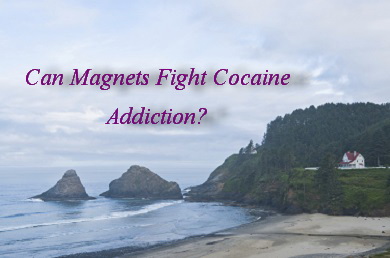 There is new hope for people suffering from cocaine addiction and it comes in the form of a potential cure, not just remission. Researchers at the National Institutes of Health (NIH) and the University of California at San Francisco have been able to eradicate cocaine addiction in rats by focusing beams of laser light into their brain matter.
There is new hope for people suffering from cocaine addiction and it comes in the form of a potential cure, not just remission. Researchers at the National Institutes of Health (NIH) and the University of California at San Francisco have been able to eradicate cocaine addiction in rats by focusing beams of laser light into their brain matter.
The scientists used genetic engineering to place rhodopsins (proteins that react to light) directly into the rats’ brain cells at the prefrontal cortex. When light is introduced, those particular cells will fire. The rats were then administered enough cocaine to develop a bona fide addiction, the hallmark of which is engaging in behavior that will result in the administration of more cocaine.
Using fiber optic cabling implanted in the tiny brains, the researchers were able to direct laser beams onto the brain cells that contained the rhodopsins. Once these prefrontal cortex neurons were activated, the subject immediately stopped all cocaine-seeking behavior. When the light was extinguished, the rats resumed behavior associated with addiction.
Although this is great news for those engaged in addiction research, the practical implications are less clear. At issue is the ability to activate prefrontal cortex neurons in human beings on a continuous basis without affecting activities of daily life. Although it is certainly possible to carry out surgical experiments similar to those undertaken by the NIH, invasive brain surgery is not something we would consider as a long-term treatment method.
Transcranial Magnetic Stimulation for Cocaine Addiction
Thankfully, scientists are already researching ways to activate prefrontal cortex neurons in cocaine addicts’ brains without using a scalpel. Transcranial magnetic stimulation (TMS) involves using a magnetic field on top of the scalp to influence behavior of the cells below the skull. This non-invasive and completely pain free process uses a coil to focus the magnetic field onto particular areas and patients experience nothing more serious than the feeling of being tapped on the head. In order to activate the cells, a high-frequency pulse is used.
The NIH plans to begin human trials of the treatment soon and hopes to show that TMS can activate prefrontal cortex neurons as effectively as the laser-light method. It remains unclear whether the relief achieved will be only temporary and, thus, require indefinite treatments. In any event, TMS may provide craving relief long enough to allow more traditional methods of cocaine addiction treatment to take hold.
Daphne sat across the table from her husband and mouthed the words, “I hate you.” Then she painted a charming smile on her face and ordered a salad. She and Sam were out to dinner with his family, something they did only rarely because of what Sam’s mother referred to as “Daphne’s drinking problem.” What no one at the table knew was that Daphne had a gram of cocaine in her clutch and no plans to drink more than one cocktail. To everyone’s surprise, a single margarita is all she had that night.
For the next four weeks, Daphne’s behavior was erratic. She didn’t find herself sneaking bottles of wine or vodka, passed out on the sofa in front of the television or lying in the floor of their shared walk-in closet, crying her eyes out over every conceivable wrong done to her in the past. Instead, she was scarce, hardly ever at home. When he did see her, she was wild with energy and ideas, frenetic to dress and shower and be off again. Her already thin frame appeared unusually slight. It didn’t look as though Daphne had been eating, or really doing anything but moving, fast.
Then on a Sunday afternoon, just like it had started, Daphne was suddenly home again—collapsed on the lawn, so drunk Sam could nearly smell the alcohol from the front door. Ever the co-dependent faithful partner, he walked to his wife and bent to scoop her into his arms. And just like clockwork, Daphne began to slur a litany of praise for her husband, how she could not live without him, how he was perfect in every way.
Days into Daphne’s return, however, she was threatening to stab herself with a kitchen knife if Sam didn’t give her access to all of her pain medication. Daphne received prescription opiates for a cracked cervical vertebra, and Sam sometimes hid them when Daphne’s drinking binges got especially bad. When she took the knife and started carving shallow cuts into the inside of her arm—something Daphne had done many times before, but always in private—Sam knew it was time to do what he had not yet done. He had his wife involuntarily hospitalized. An emergency hospital stay turned into a longer, voluntary in-patient psychiatric stay, and it was there that Daphne was formally diagnosed.
She was an alcoholic. She was a drug addict. She had anorexia. She had bipolar disorder. And she had borderline personality disorder. No one had expected this outcome, least of all Daphne.
Mental Disorders and Addiction
When a person has both a problem with addiction and a mental disorder, he or she is said to have a dual diagnosis (or comorbidity). Many times, substance abuse can mask the signs of mental illness. Traits or characteristics of mental illness, which may otherwise be quite noticeable to close family members and loved ones, cloak themselves in the depressed behavior brought on by excessive alcohol use (alcohol is itself a depressant), or the erratic behavior others exhibit whether using alcohol excessively or when high or seeking drugs.
People with certain mental disorders may seek to “self-medicate” the anxiety or depression that arises as a result of the disorder by consuming alcohol or using drugs, or a combination. One such disorder is bipolar disorder. About 56 percent of people with bipolar have experienced drug or alcohol addiction. The personality disorders, such as borderline personality disorder (BPD), also share a high rate of dual diagnosis. According to the Center for Drug and Alcohol Programs at the Medical University of South Carolina, “Over 50 percent of drug abusers and almost 40 percent of alcoholics have at least one serious mental illness.”
Besides bipolar and BPD, depression, anxiety disorders, schizophrenia and other personality disorders frequently co-occur with substance abuse. Psychiatric issues can begin before or after the onset of substance abuse.
Treatment for the Dual Diagnosed
There is no question that adding disorders and substance issues to the mix significantly compounds an individual’s stress and further complicates treatment options. Those who have co-occurring mental disorders have a higher rate of relapse when it comes to getting sober. But even people with mental disorders and co-occurring substance abuse issues can begin to heal. What helps is an integrated therapeutic approach—where mental health treatment and addiction recovery are not thought of as separate, but fused into an integrated whole. Compartmentalizing too many areas of her life is often how an addict with mental health issues gets to the place in which she desperately needs recovery, so seeing her life as a working whole is important.
Thinking, “I cannot attend to my sobriety if I do not attend to my bipolar disorder” and vice versa is a good way to think about it. It’s quite true, in fact—not simply a bromide offered by practiced faces in the business of therapy.
While Daphne’s situation may seem extreme, it is likely that the deeper part of her issues are connected. When she begins to do the work to unravel what the deeply held beliefs and long-held stories that most affect her mental state are, she may begin to find herself experiencing better balance—and an ability to deal with the boat-rocking experience of finding herself with a half-dozen labels, all too frightening to think about in the beginning.
Becoming educated about the nature of addiction and the reality of mental illness is a good place to start. Choosing to look at one’s life carefully is the opposite of what addiction means. When you wrestle the hydra of addiction and mental illness, you know you’re only going to get more of the same. Better not to go in swinging but with clarity, a willingness to learn and possibly, maybe, a little bit of room for something like hope.
The war on drugs is failing, according to the Government Accountability Office (GAO). In 2009, more people died as a result of drug use than from all traffic accidents combined. And despite the fact that over $1 trillion has been spent since 1971 trying to deter people from illegal substance use, not much has changed.


